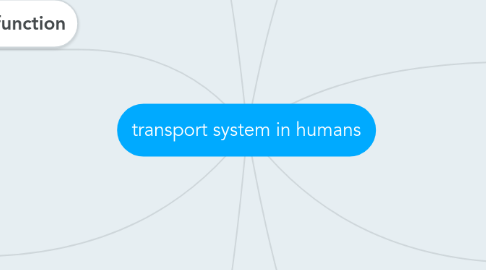transport system in humans
by Solid Squidge

1. Red Blood Cells
1.1. Red blood cells carry oxygen. They have no nucleus and are biconcave, this allows them to carry more oxygen as it gives them a larger surface area
2. White Blood Cells
2.1. White blood cells kill invading pathogens. There are two types of white blood cells: Phagocytes, these ingest and absorb the pathogens, then release an enzyme to destroy them. Then there are Lymphocytes which bind, damage and destroy pathogens, they coat pathogens, clumping them together so they are easily ingested by Phagocytes
3. How is the heart adapted to its function
3.1. The left ventricle is bigger than the right as it has to pump blood to the entire body whereas the right only has to pump blood to the lungs. Has capillaries which connect the veins and arteries
4. Plasma and Platelets
4.1. Plasma transports water, nutrients, hormones, urea and antibodies. Platelets stick to the walls of damaged blood vessels, forming a scar
5. passage of blood through the heart
5.1. The human circulatory is a double circulatory, this means in every circulation the blood passes through the heart twice, the left side of the heart pumps blood to the body and the right side pumps blood to the lungs
6. Arteries
6.1. Arteries carry blood from the heart. The blood is under high pressure, coming from the heart. Arteries have thick walls
7. veins
7.1. Veins return blood to the heart. The blood is under low pressure. Veins have thin walls. Blood is prevented from flowing back by valves
8. capillaries
8.1. Allow food and oxygen to diffuse to cells while waste is diffused from cells. Capillaries have thin walls , this allows diffusion to easily take place. capillaries form extensive networks so that every cell is near to a capillary carrying blood


